





When Austin, Texas-based architect Hugh Jefferson Randolph sat down with his clients, Bill and Gina O’Hara, to imagine what their dream house could be, they conjured up some real-world reference points. Randolph thought of Fort Davis—an Indian Wars outpost in West Texas with living quarters wrapped in long, dramatic porches. His clients mentioned the colonial plantation-style property in the film Out of Africa, set in 1910s British East Africa (now Kenya). Then Randolph suggested Cibolo Creek Ranch in Marfa, Texas—and learned his clients had married there years before and kept the place very close to their hearts. It was architect-client compatibility at its finest.
Randolph, whose Austin firm is a member of our Architect/Designer Directory, set to work on a new house and a detached guest porch on nine acres outside of Austin, and the owners later engaged landscape designer Jeff Neal to fill out the gardens.
Photography by Jacob Bodkin courtesy of Hugh Jefferson Randolph Architects. Photos by Jeff Neal (where noted) courtesy of the designer.
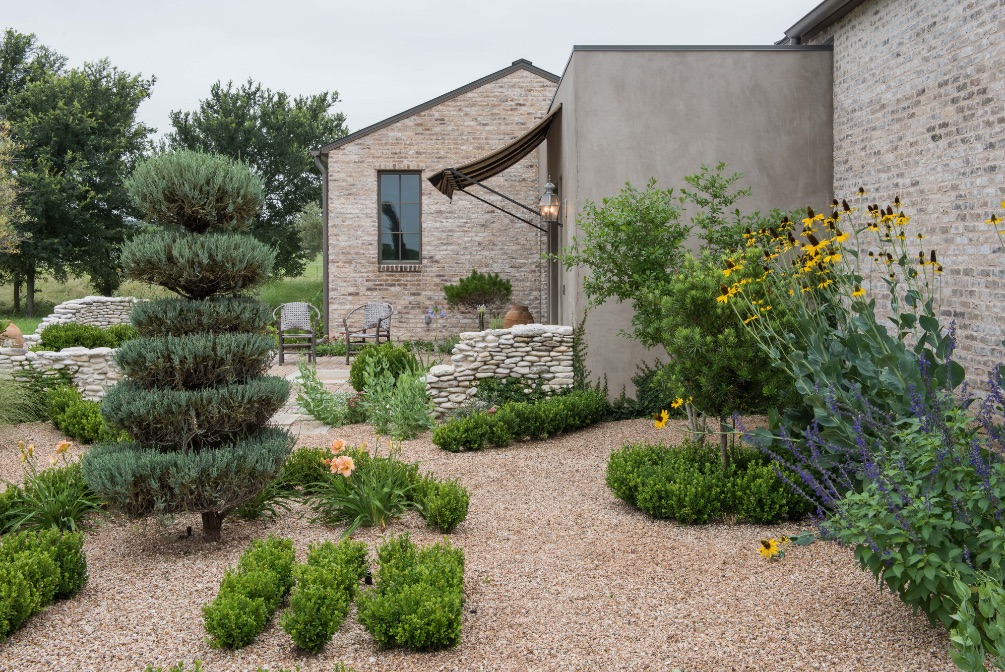
Above: Randolph and clients wanted the property to evoke an old ranch, “but not just a Texas ranch,” says Randolph. They strived to include the “vague associations” they had with architecture in Spain, Mexico, India, and elsewhere, where occupants have shade but still feel outdoors.
The front entry is covered in unpainted stucco in a natural finish.
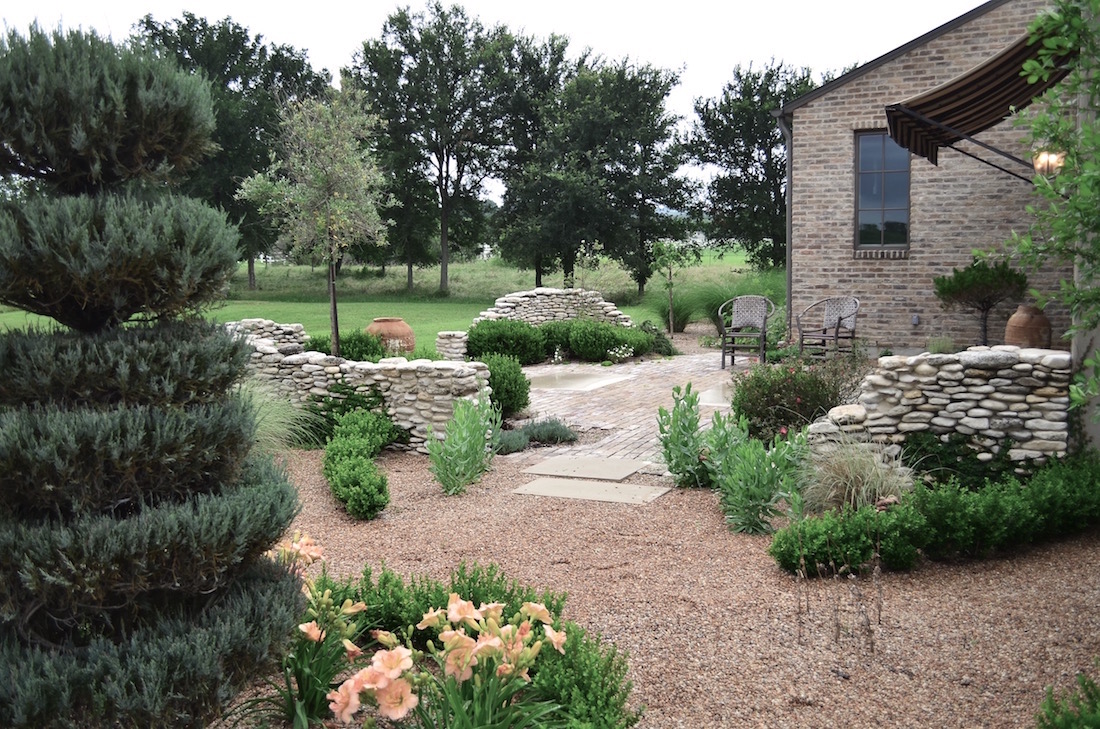
Above: “We like to think of [landscape design] as creating outdoor rooms,” said Randolph. Around this L-shaped house and porch, “we created some zones where it’s a little more formal,” he says, “and the rest natural.”
One zone is defined by a series of low walls that landscape designer Neal created with stone found on the property. “We didn’t want the landscape immediately adjacent to the house to be all natural,” said Randolph, “or organic, in the geometric sense.” Instead, “we wanted to use boxwoods and fences and things to define the spaces.” Photo by Jeff Neal.
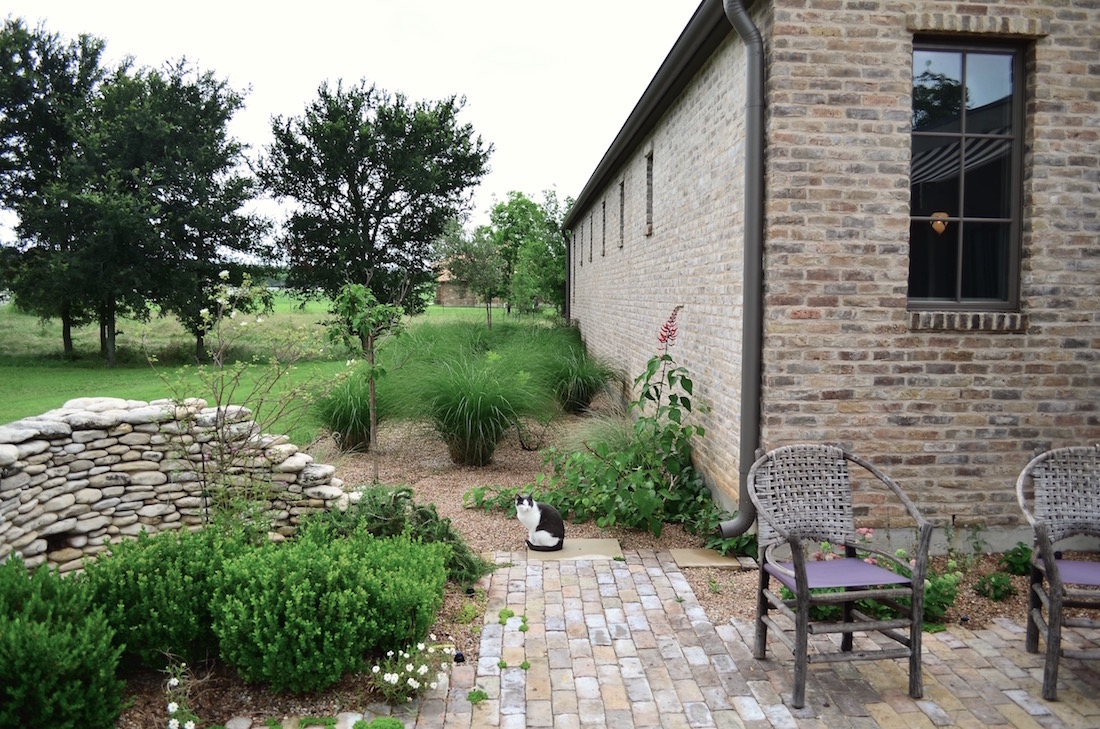
Above: “This is a gardener’s garden,” said Neal. “We just wanted to put in the ‘bones’ and leave [the owner] areas where she can start gardening on her own in the future.”
Neal chose pea gravel to line the garden, “both as a walking surface and as mulch for the plants.” He inserted stone walking pavers as suggested pathways throughout the garden. Photo by Jeff Neal.
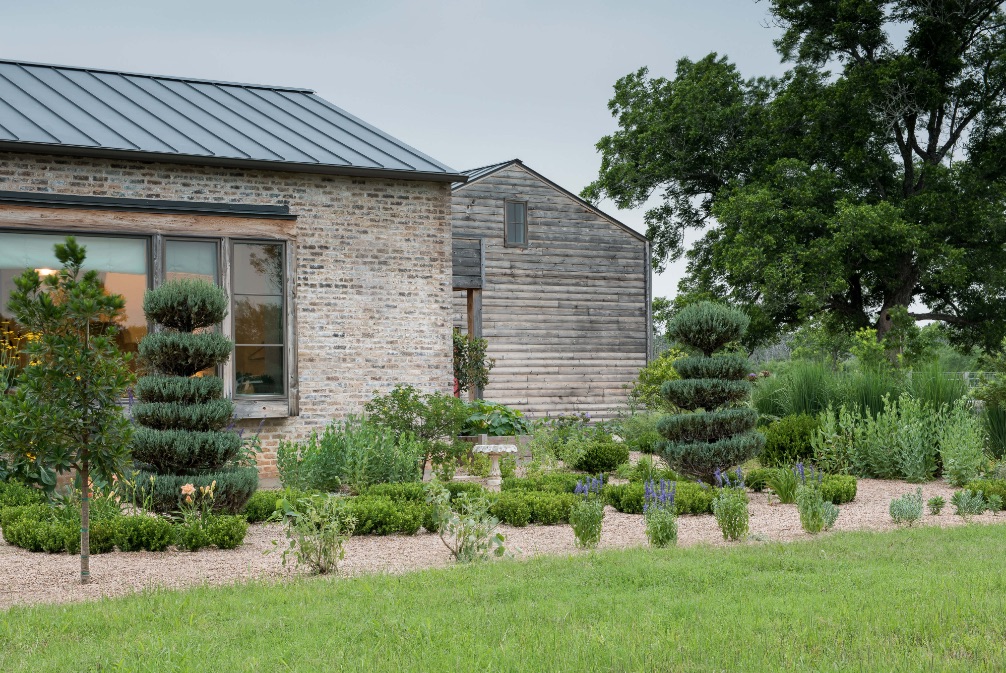
Above: Randolph largely credits client Gina O’Hara with the outcome of the project. “She was very involved,” he says. “She has a great sense of style and a very clear sense of who she is.” He picked up clues to her tastes when they met for consultations. “From the music she played in the background, to the setting she chose for her new home, to the clothing she wears,” he said, “It’s all very much an expression of who she is.”
Though the main house—which contains all the daily living spaces for the empty nesters—is made of new brick, Randolph’s team installed it with an intentionally hand-wrought look. “We didn’t want the joints to look too crisp and new,” said Randolph, “like commercial joints.”
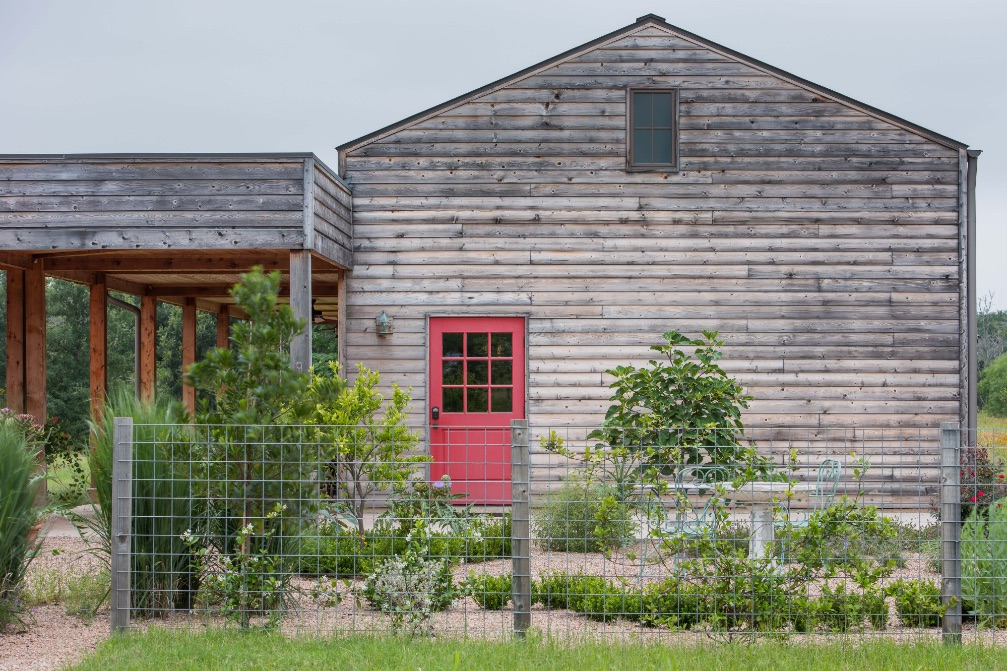
Above: Around the corner, the detached porch building is covered in weathered cedar siding.
Both clients were very involved in the plant selection, said Randolph, which produced “a combination of plants that are always there to give [the garden] structure, and others to give a looser sense of nature.” The mix includes boxwoods, grasses, and what Neal calls “cupcake trees”—large topiaries—plus seasonal vegetables and ornamental flowers to soften the arrangement.
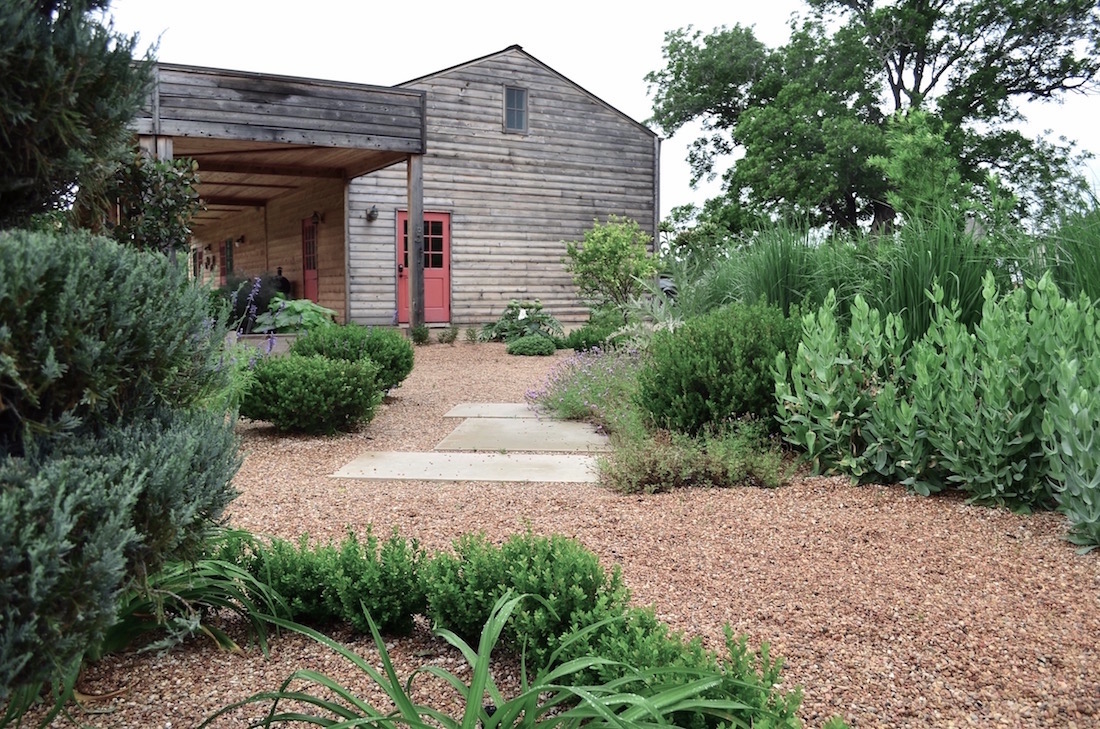
Above: The plants were chosen in part for deer resistance and drought tolerance. “The tall grasses are pretty hardy, and once the boxwood is established it is pretty tough,” said Neal. Photo by Jeff Neal.
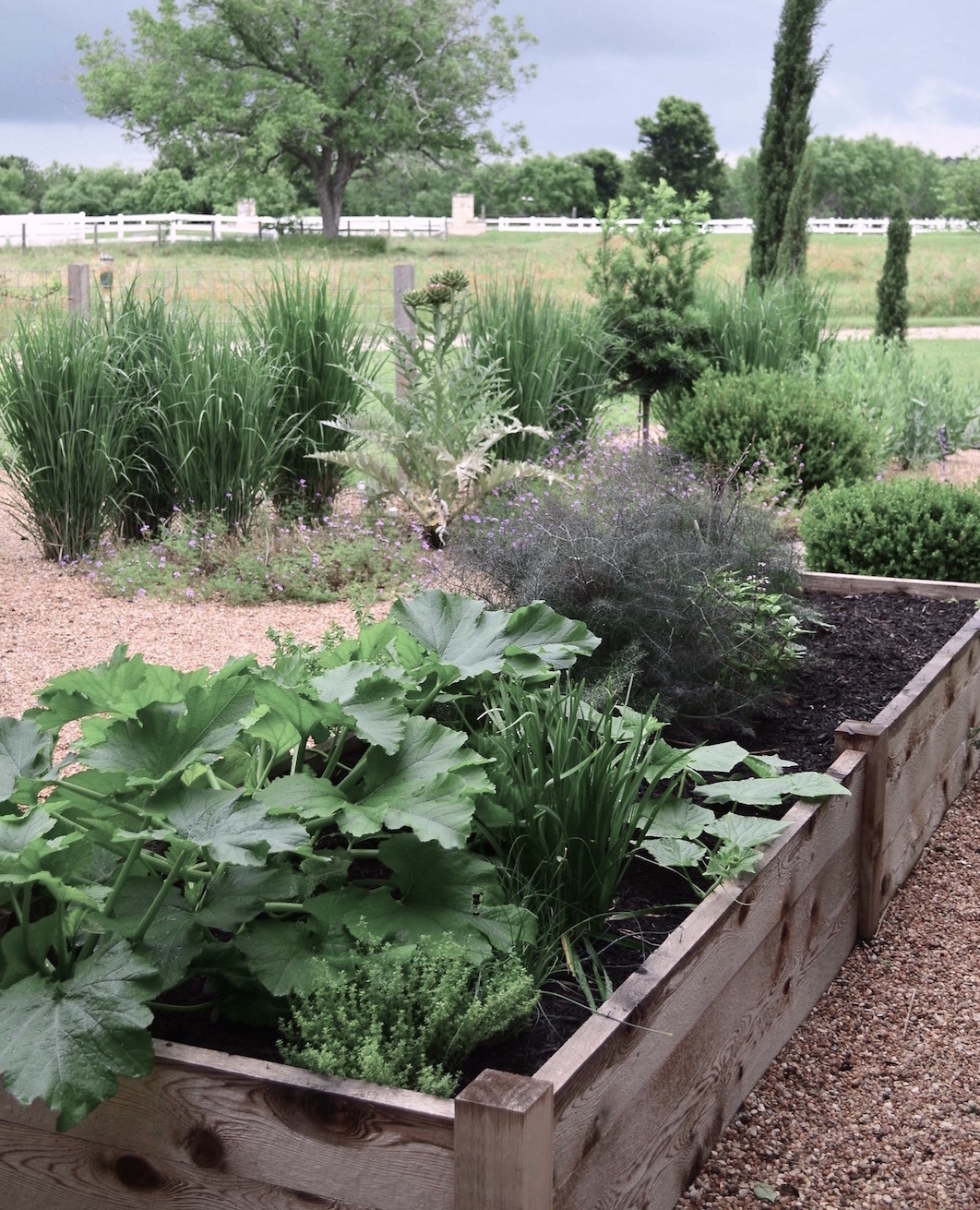
Above: Neal designed a raised bed for a kitchen garden on the side of the house, and enclosed the area with a low fence made of bull wire. Photo by Jeff Neal.
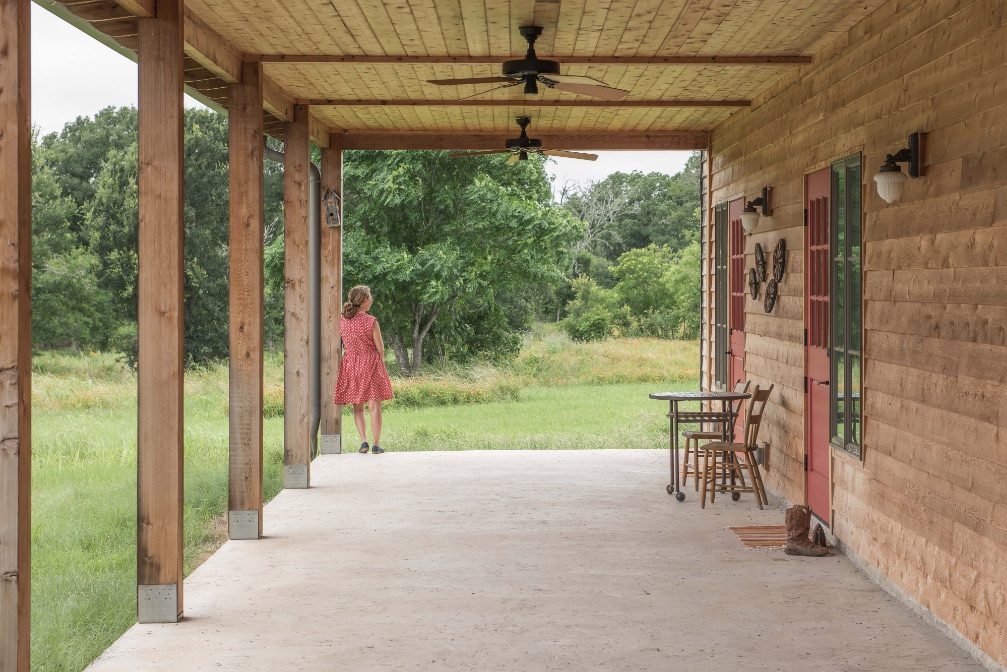
Above: A separate L-shaped garage and guest porch has two guest bedrooms and a bathroom for when children and grandchildren come to stay. If they’re someday in need of extra sleeping space, the clients may convert the open porch into a sleeping porch, screened from mosquitoes.
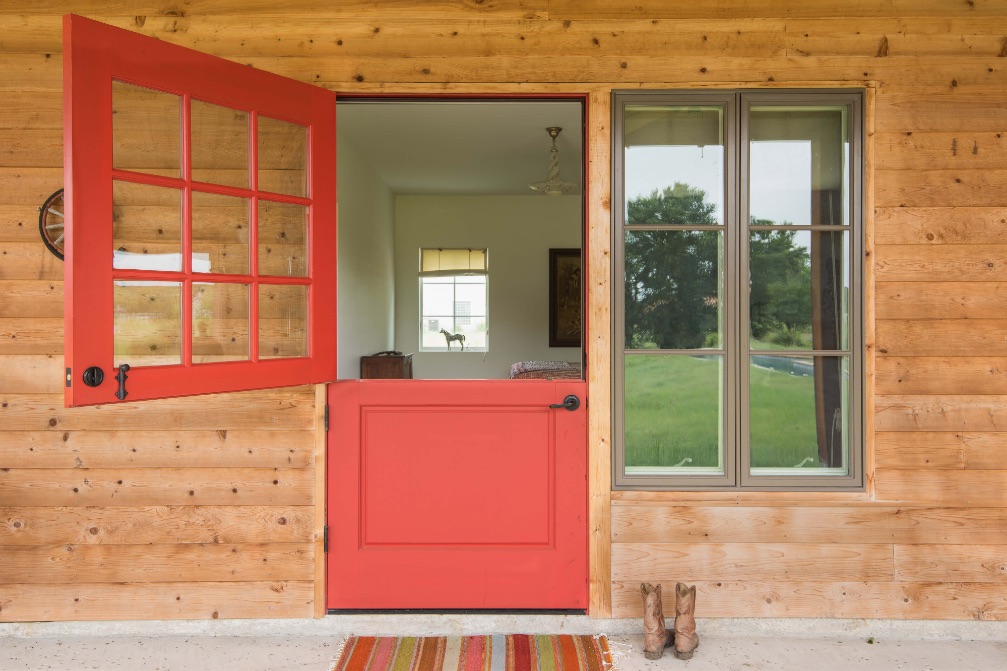
Above: Each of the guest bedrooms has a Dutch door, which Randolph notes is “two-thirds character and one-third functionality.”
“They’re there because they have a really evocative sentimentality,” he says, with a passing mention of Mister Ed.
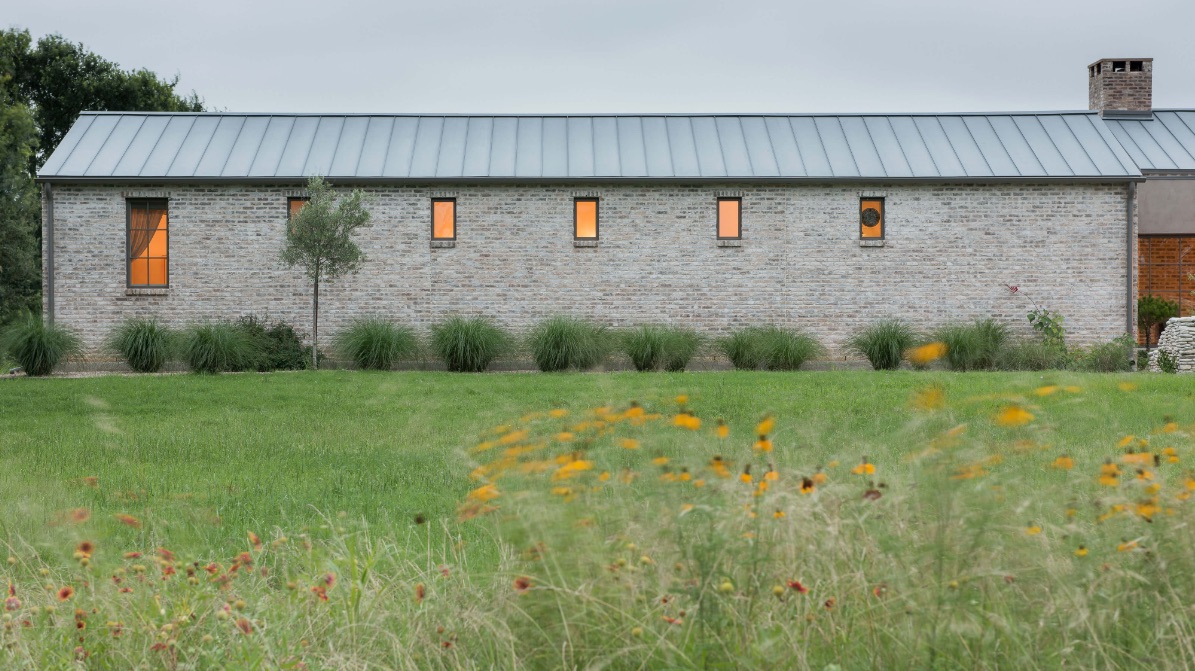
Above: Though “budget” is always relative, nearly every project has one—and Randolph shared some ways the clients kept their project costs in check. Using cedar siding on the guest quarters was a huge cost savings over brick, and they found affordable solutions for trim work and detailing. “But the most important thing was the square footage,” says Randolph. They capped it at 2,600 square feet for the main house and another 2,000 for the porch. “We’re very proud of what we accomplished with the budget.”
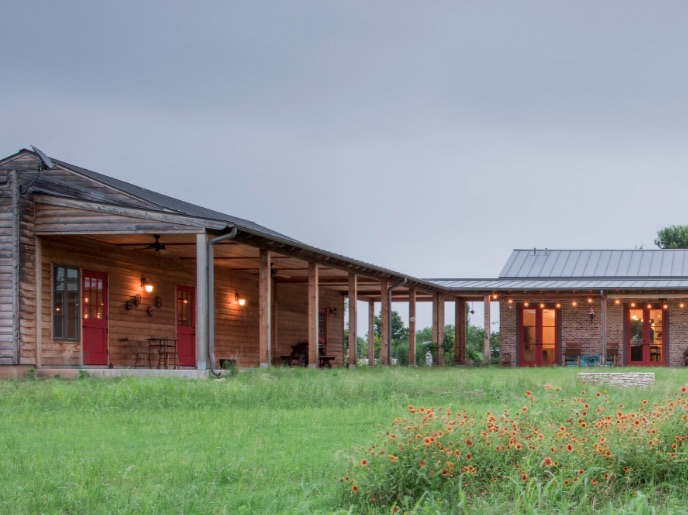
Above: The house and porch overlooks a pool and meadow that transitions into a small forest.
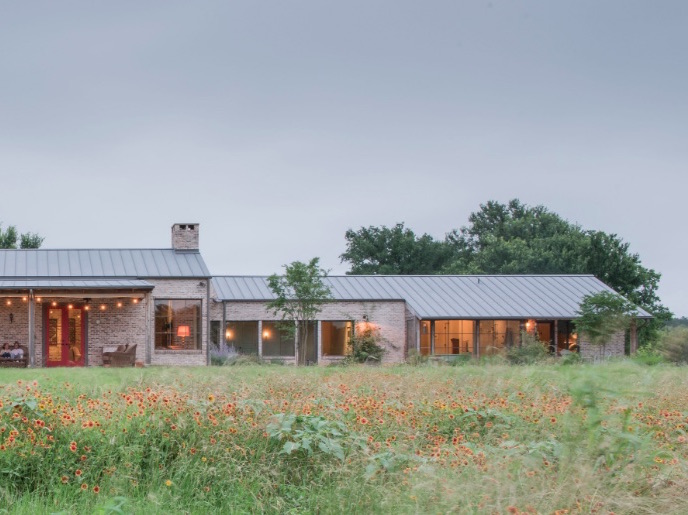
Above: The existing meadow was a little too feral, according to Neal, so they removed some material and planted grasses and wildflowers. “Closer to the house it’s more tame,” he says. “As you go farther out, it gets a little more wild.”
For more in the area, see Landscape Architect Visit: The Hotel Saint Cecilia in Austin, TX and A Trip on the Wild Side: Anahuac Wildlife Refuge in Texas.
Copyright © www.100flowers.win Botanic Garden All Rights Reserved